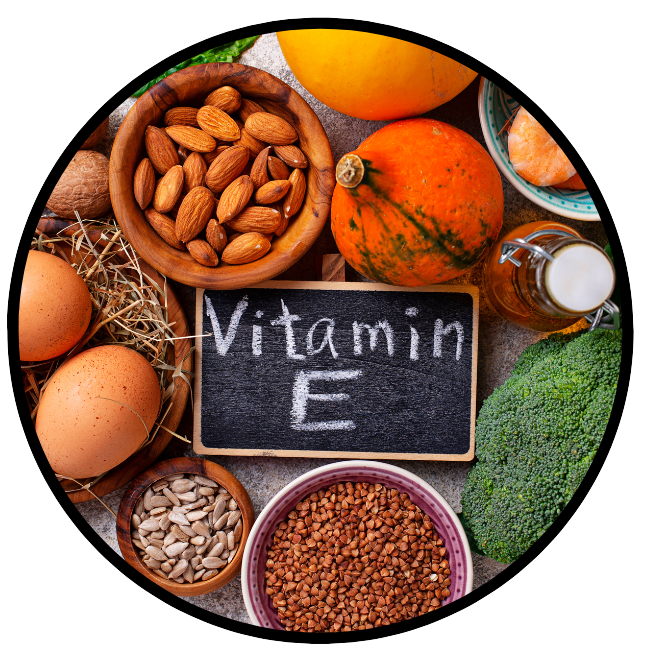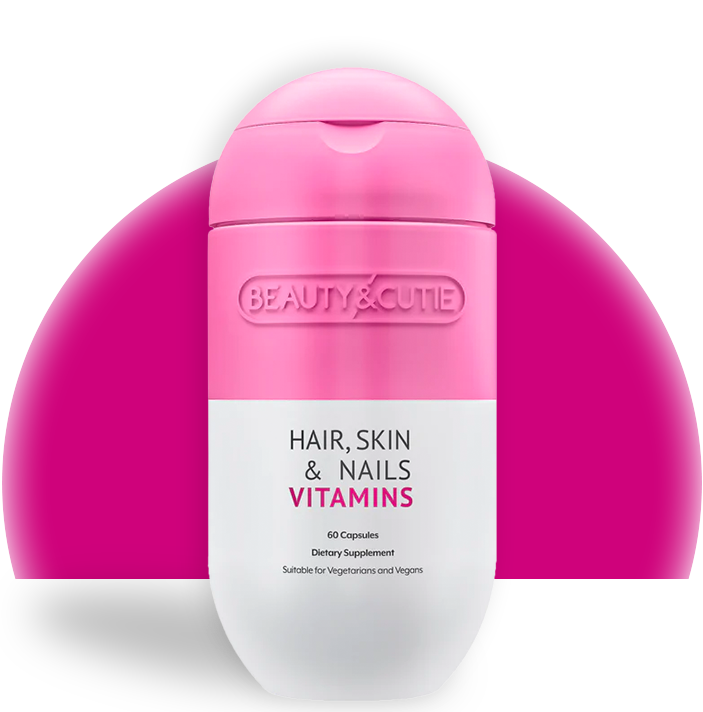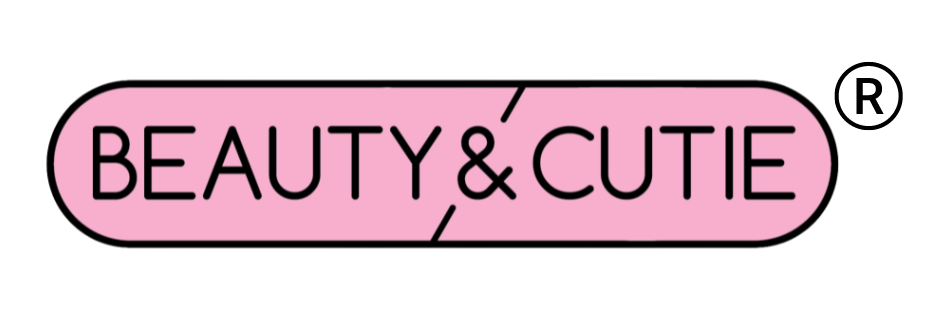
WHAT IS VITAMIN E?
Vitamin E is an essential vitamin for your health. You may see or read about it being referred to as “fat-soluble”. This means it can be dissolved in the liver, and fatty tissues of your body, much like sugar is dissolved in water. Your body can store vitamin E, in the liver and fatty tissues and make it available and ready to use when needed.
There are eight natural forms of Vitamin E (4 each from the families of tocopherols and tocotrienols), but the most important for health is known as d-alpha-tocopherol. Synthetic forms are also available and called dl-alpha tocopherol (a sneaky addition of a single letter in the prefix for which you should be on the lookout). They are often produced from petroleum products. Not only does that sound like something you do not want to put in your body, but the vitamin E contained within these supplements is not stored well in your body. A portion will be lost with each trip to the bathroom1. So, be sure to check the label of any vitamin E supplement you are considering and verify it contains the natural form, otherwise, your body will not reap the full benefit, and you will be wasting your money.
Our product uses only the naturally occurring form of vitamin E, d-alpha tocopherol succinate, which is the most biologically active and absorbed form of Vitamin E. It is also something that you should look for on the ingredient list of your vitamin supplements, especially if you do not eat a diet that regularly features foods high in natural vitamin E. These include2:
- Nuts
- Seeds
- Fruits and vegetables

Beauty & Cutie
In our product we use Vitamin E as d-alpha tocopherol, which is the most biologically active and absorbed form of Vitamin E

WHY IS VITAMIN E IN MY PRODUCT?
To understand why it is in our product, we need to take a step back to understand a term we frequently hear associated with disease and aging – free radicals. So, what exactly is a free radical? To answer that we need to return to science or chemistry class in school. Recall that an atom is surrounded by orbiting electrons with different orbits located at different distances from the atom’s core. Only a certain number of electrons are permitted to occupy positions in each of these orbits. Atoms are most stable when all the available places for electrons in the outermost orbits are filled. If there are empty places, the atom much prefers when they are filled by pairs (after all, no one wants to be alone).
However, if there is a lone electron in the outermost orbit of the atom, it becomes very reactive and is called a free radical. Free radicals will hunt down other elements to find that extra electron it can confiscate to complete the pair.
Our bodies produce a certain level of these free radicals. They are typically known as “reactive oxygen species” (ROS) and “reactive nitrogen species” (RNS). They are in fact essential for our well-being, but like most things, in moderation. Trouble begins when these free radicals increase in concentration in our bodies as a result of external factors such as:
- Ultraviolet (UV) radiation
- Pollution
- Smoking
- Alcohol consumption
- Fried foods
They satisfy their appetites for electrons by stealing them from the cells in our body, leaving them damaged and precursors to disease. Our body is left in a state of “Oxidative Stress”. Worse yet, some of the species from which the radicals have scavenged electrons will themselves now become radicalized, and the process cascades down a dangerous path.
All is not lost, however, due to another entity that is also frequently discussed in nutrition and health – the antioxidant. These are supplied by the body itself and supplemented through healthy diet choices. They act by either neutralizing or decomposing the free radical species.
We can now return back to our original question as to why vitamin E is included in our product. It is a well-known powerful fat-soluble antioxidant2. It is the most important lipid phase antioxidant3, crucial in preventing free radical damage to our cells membranes (think of the membrane as the skin of the cell). This type of cellular damage has been associated with:
- Cancer4
- Neurodegenerative diseases5 such as Alzheimer’s, Parkinsons’s and ALS (Lou Gehrig’s disease)
- General aging6
WHAT IS THE ROLE OF VITAMIN E FOR HAIR, SKIN, AND NAILS?
Vitamin E plays an important role in skin care. It protects the skin from harmful UV radiation from the sun by halting the formation of ROS, scavenging free radicals, and maintaining the health of cell membranes. Oral supplementation with vitamin E has been shown to have a beneficial effect in the prevention of sunburn7, especially when used in conjunction with vitamin C. Similar results were obtained in another study where oral supplementation of vitamin E was touted to be a “basic UV shield for the entire body”, providing years of a cumulative benefit for skin health. Even for different skin types, a beneficial effect of vitamin E in concert with vitamin C was observed8.

Taking these studies one step further, not only was the effect of vitamin E combined with vitamin C significant in reducing sunburn, biological assays also showed that these supplements, when combined, protected against DNA damage9.
But why must vitamin E be applied with vitamin C to obtain the best results?
The answer lies in the antioxidation mechanism. Vitamin E does all the hard work acting as the primary antioxidant, resulting in its short-term radicalization before being rejuvenated by vitamin C10 and back ready for more antioxidation work.
Antioxidants have also been shown to be beneficial for hair health.11Antioxidants applied to pre-treated hair improved mechanical properties and preserved the color and shine of hair strands. Furthermore, protein damage caused by species produced by the ROS attack on cell membrane lipids initiated by UV radiation was found to be lower with antioxidant usage, suggesting an improvement in hair integrity.
Oxidative stress generated by ROS can also lead to hair aging (greying) and hair loss12. Most studies on age-related hair changes focus on hair loss, but new, emerging hair strands can show significant changes with increasing age that can have a cosmetic impact. Sources of oxidative stress resulting from ROS on new hair growth are the same as those listed earlier. These factors provide even more reasons to ensure adequate antioxidants such as vitamin E are available to counteract the effect of oxidative stress brought on by free radical ROS.
References:
- https://febs.onlinelibrary.wiley.com/doi/full/10.1016/S0014-5793%2898%2901210-1
- https://ods.od.nih.gov/factsheets/VitaminE-HealthProfessional/
- https://www.ncbi.nlm.nih.gov/pmc/articles/PMC1731363/
- https://pubmed.ncbi.nlm.nih.gov/24278542/
- https://pubmed.ncbi.nlm.nih.gov/33202952/
- https://pubmed.ncbi.nlm.nih.gov/9540842/
- https://pubmed.ncbi.nlm.nih.gov/9870553/
- https://pubmed.ncbi.nlm.nih.gov/12013192/
- https://pubmed.ncbi.nlm.nih.gov/15675947/
- https://www.nature.com/articles/278737a0
- https://pubmed.ncbi.nlm.nih.gov/23123594/
- https://pubmed.ncbi.nlm.nih.gov/26574302/
